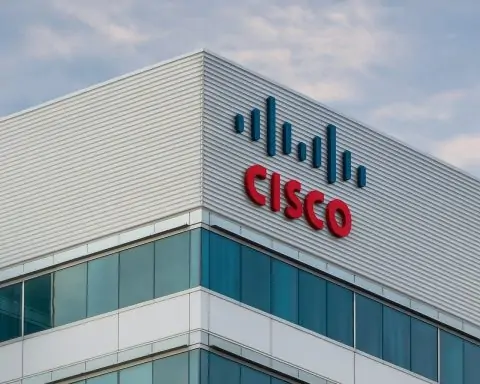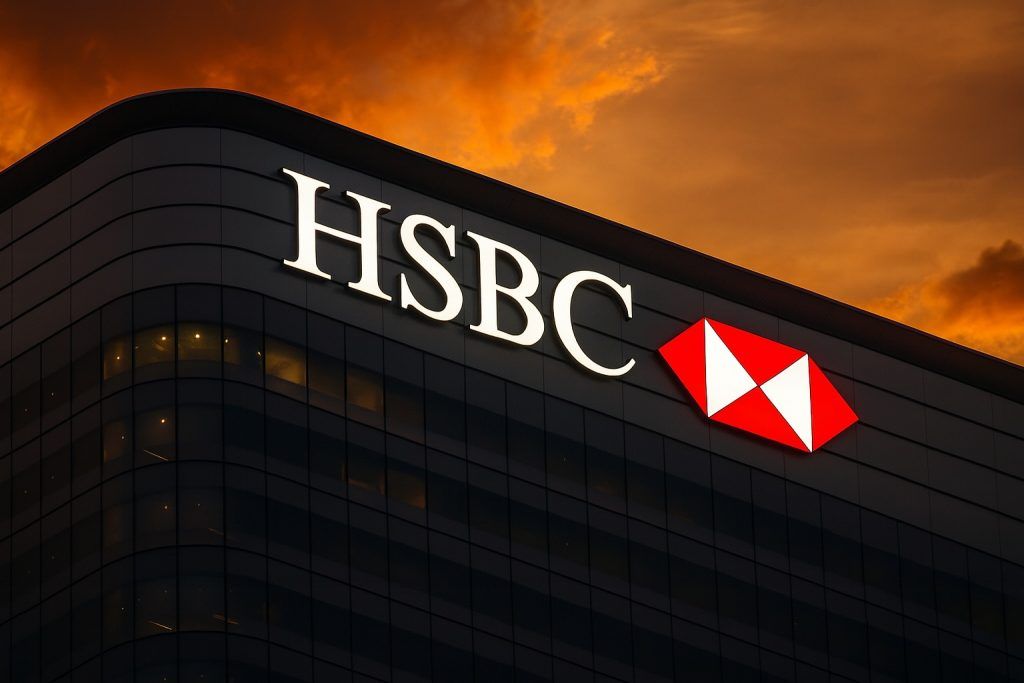- Multi-Year Peak: International Airlines Group (IAG) stock traded around 410 pence on October 28, 2025, its highest level since early 2020 and within ~7% of an all-time high (~440p) [1]. The share price has surged ~360% from pandemic lows (~84p in 2020) to current levels [2]. On Monday, it hit 411.7p intraday before closing at 409.6p [3].
- Travel Rebound Drives Rally:Robust travel demand and a post-Covid turnaround have fueled IAG’s rebound. First-half 2025 revenue jumped 8% year-on-year to €15.9 billion, and operating profit soared 43% to €1.88 billion [4]. High-margin long-haul routes (e.g. British Airways’ transatlantic flights) are booming, and IAG slashed net debt to ~€5.4 billion from €7.5 billion a year ago [5] [6].
- Analysts Bullish: City analysts see more upside ahead. Citigroup recently hiked its IAG price target to 620p (≈54% above current) and reiterated a “buy” rating [7]. Six analysts now rate IAG a Buy (vs. 1 Sell), and the consensus target is ~442p [8]. Major banks like Morgan Stanley even named IAG their “top pick” among European airlines, citing its dominant Heathrow slots and premium market focus [9].
- Undervalued vs Peers: Despite the rally, IAG’s valuation looks cheap. The stock trades around 6–8 times earnings (P/E ~6.3 [10]), far below the FTSE 100 average (~18) [11]. It also trades at a discount to rivals – for example, Air France-KLM and IAG have forward P/E ratios near 3–4, lagging budget carriers like easyJet and Ryanair [12]. Strong profits have outpaced the share price, suggesting the stock is undervalued relative to its earnings power.
- Shareholder Returns & Outlook: IAG has resumed dividends and buybacks after pandemic cuts, planning to return ~€1.5 billion to investors (projected ~2.5% dividend yield for 2025) [13] [14]. All eyes are now on the Q3 earnings report due November 7, with consensus forecasting a record €2.1 billion operating profit [15] [16]. Hitting that could push shares toward new highs. However, management and analysts caution that rising fuel costs and macroeconomic uncertainties remain key risks [17] [18].
Shares Rally to Multi-Year High
IAG’s stock – the parent of British Airways, Iberia, Aer Lingus and other carriers – has staged a remarkable comeback in 2025. As of Tuesday, October 28, shares hovered around 410p, territory not seen since before the pandemic. The price is up roughly 90% year-on-year and has more than quadrupled from its 2020 crash lows [19]. This rebound makes IAG one of the FTSE 100’s top performers of the past two years [20]. It now boasts a market capitalization near £19 billion [21], reflecting renewed investor confidence in air travel.
What’s driving the surge? A sustained travel boom and aggressive turnaround efforts. IAG was one of the pandemic’s hardest-hit companies – its shares sank below 90p in 2020 amid global travel bans. But as borders reopened, pent-up “revenge travel” demand sent passenger volumes soaring. The group returned to profitability and executed cost cuts and debt reduction. In fact, IAG’s H1 2025 results confirm a robust recovery: revenue up 8% to €15.9 B and operating profit up 43% to €1.88 B [22]. The company’s operating margin climbed to ~12%, from under 9% a year prior [23] [24], signaling improved efficiency and pricing power.
“Our strong performance … reflects the resilience of demand for travel and the success of our ongoing transformation,” CEO Luis Gallego said after the interim results [25]. He noted a “structural shift in consumer spending towards travel” that continues to benefit IAG [26]. In other words, households are prioritizing leisure and experiences, keeping planes full even as living costs rise.
Crucially, premium travel is leading the way. British Airways – IAG’s flagship – has seen buoyant demand for business and first-class cabins on transatlantic routes, which remain lucrative. “The strength of [IAG’s] premium cabin offering has more than offset any weakness” in economy bookings to the U.S., observed Richard Hunter, Head of Markets at Interactive Investor [27]. He added that British Airways remains the “jewel in the crown” for IAG, especially in the North Atlantic market [28]. This premium demand helped lift passenger revenue ~5% and kept planes ~84% full on average – remarkably high load factors [29] [30].
IAG’s other divisions are also contributing. The company maintains leading positions on routes to Latin America and Europe, which it says are seeing “robust” traffic [31]. Even long-haul operations in Asia, which lagged due to past restrictions and airspace issues, are being rebuilt with new flights to Tokyo, Bangkok, and more [32]. Overall, IAG’s diversified portfolio of airlines and routes has enabled it to capitalize on the global travel revival.
Financial Turnaround and Contributing Factors
Beyond travel demand, IAG’s financial turnaround has impressed analysts. The group took painful steps during Covid – raising cash, cutting jobs, retiring older jets – and is now reaping the benefits as revenue returns. Cost control and efficiency programs have helped expand margins. In the first half of 2025, IAG’s operating margin reached 11.8%, up from 8.9% a year earlier [33] [34]. The company is targeting a 12–15% margin in coming years [35], which would put it among the industry’s leaders in profitability.
A key achievement has been debt reduction. IAG’s net debt has fallen to about €5.4 billion, down from over €7.5 billion a year ago [36] [37]. This ~$2 billion deleveraging was driven by strong cash flows and perhaps some asset sales, greatly strengthening the balance sheet. “Significant cash generation” has enabled IAG to chip away at its pandemic-era debt load, noted Hunter, calling debt the “biggest thorn in its side” now gradually being removed [38]. The healthier finances have also allowed IAG to resume shareholder payouts – including a €1 billion share buyback (with ~€650 M completed so far) and reinstating its dividend (yield ~2% this year) [39] [40]. Such moves signal management’s confidence in the recovery’s sustainability.
Several external factors are bolstering IAG’s fortunes as well:
- Jet Fuel and Currency: Although oil prices have risen lately, IAG and other European carriers had hedged much of their 2025 fuel needs [41] [42], softening the near-term impact. The company also benefits from a strong U.S. dollar on transatlantic sales (while many costs are in pounds or euros). A strong pound sterling – now around $1.33, a multi-year high – can slightly dampen UK exporters’ earnings [43], but IAG’s broad currency mix provides some balance.
- Macroeconomic Trends: The broader stock market rally has created a favorable backdrop. London’s FTSE 100 index just hit record highs in late October [44] amid optimism about trade and interest rate cuts. Travel demand has held up despite inflation; in fact, UK retail sales and consumer confidence have surprised to the upside, suggesting consumers are still willing to spend on holidays [45]. Globally, cooling inflation has raised hopes of central bank rate cuts, which would reduce borrowing costs and support discretionary spending [46]. These trends buoy airline stocks like IAG.
- Industry Recovery: The airline industry’s outlook remains upbeat. International air traffic is nearing or exceeding pre-pandemic levels in many regions in 2025 [47]. Industry group IATA expects passenger volumes to keep growing into 2026, albeit at a moderate pace [48]. Notably, capacity discipline (flying fuller planes, not oversupplying seats) has allowed airlines to raise fares and restore profitability. IAG’s dominance at slot-constrained hubs like London Heathrow gives it a competitive edge to maintain pricing power on busy routes [49].
- Competitor Activity: Peers are also thriving, highlighting a sector-wide rebound. Europe’s largest budget carrier Ryanair recently reported record passenger numbers and has been executing share buybacks to return cash to investors [50]. Rival legacy carrier Lufthansa, however, offers a cautionary tale – its shares slumped to four-month lows last week amid rising oil prices and a broker downgrade [51]. This underscores that even as airline profits surge, investors remain sensitive to cost headwinds.
Analysts and Experts Weigh In
Market sentiment toward IAG has flipped bullish. A year ago, many viewed airline stocks warily, but now analysts are racing to upgrade their forecasts. “IAG’s share price has staged a stunning comeback from its pandemic plunge,” noted one investing news report, calling the stock a recovery success story riding a multi-year uptrend [52].
Multiple banks have lifted their targets for IAG in recent months. Citi’s new 620p target – up from 390p – implies the stock could climb more than 50% higher [53]. Royal Bank of Canada also raised its target to 500p (outperform rating), and Deutsche Bank reiterated a Buy with a 460p goal [54]. The consensus of City analysts is around 440–445p [55], which would mark a fresh all-time high if reached. Notably, there are no major “sell” ratings right now – a sea change from a few years ago when uncertainty dominated the outlook.
Analysts argue that even after its big rally, IAG remains a bargain. The stock’s price-to-earnings ratio near 6 is “far below” both the market average and airline peers [56] [57]. In plain terms, investors are paying a modest ~£6-8 for each £1 of IAG’s annual earnings, whereas the broader FTSE 100 trades near £18 for the same £1 of earnings [58]. “Strong earnings have outpaced the share price, making the stock look cheap relative to profits,” one analysis noted [59]. This value case – combined with IAG’s improving balance sheet and resumed dividends – has drawn in long-term bulls. Some even see multi-year upside: The Motley Fool UK reported that certain City models put IAG’s fair value around 500p or higher in 2025, assuming earnings growth continues (though more cautious views exist, like Barclays’ hold recommendation with a target near £3.90) [60] [61].
Industry experts are also weighing in on IAG’s strategic position. Morgan Stanley’s aviation team recently named IAG its “Top Pick” in European airlines, citing unique strengths [62]. With British Airways commanding over half the take-off slots at Heathrow – one of the world’s busiest international hubs – IAG enjoys a fortress position on transatlantic and premium routes [63]. This slot advantage, combined with joint ventures (like the Atlantic partnership with American Airlines) and the rich 30-million-member Avios loyalty program, gives IAG pricing power that budget airlines can’t easily match. “IAG is uniquely positioned to benefit from disciplined capacity and high-margin U.S. routes,” the Morgan Stanley note observed [64].
At the same time, IAG’s management is signaling confidence. Alongside reinstating dividends, the company reiterated robust full-year guidance. “These results give us confidence that we will deliver good earnings growth and margin progression… and create value for our shareholders,” CEO Gallego affirmed in a statement [65] [66]. He highlighted plans to keep investing in fleet upgrades and technology to cement operational gains. IAG’s decision to reward investors (after several years of no payouts) speaks volumes – it suggests the board believes the worst turbulence is over and that cash flows will stay strong.
Market commentators do note a few dissenting voices. For instance, Barclays analysts have warned of lingering risks – they reportedly kept an unusually bearish stance (equivalent to a Sell) even as the stock climbed, pointing to possible headwinds like global slowdown or competitive pressures [67]. However, this is very much a minority view now. The overall analyst tone is optimistic, emphasizing IAG’s improved fundamentals and still-low valuation.
Outlook: Record High in Sight, But Watch Fuel and Economy
With IAG’s share price within touching distance of its pre-pandemic record (~440p), the big question is whether it can break into new high ground. Many analysts believe it can – possibly as soon as the upcoming earnings release. November 7th will be a pivotal date, as IAG reports its third-quarter 2025 results. The consensus expectation is around €2.1 billion in operating profit for Q3 [68], which would mark a huge jump from the €1.7 billion a year earlier and likely be the strongest quarter in the company’s history. If IAG hits or beats that figure, it would underscore that the post-Covid recovery has not only fully materialized but accelerated. “Most importantly, there are signs the bulls are targeting the all-time high of 440p, which may happen soon, potentially after its financial results,” observed an Invezz market analysis [69]. Some traders even eye 500p as a longer-term target if momentum continues [70].
Key things to watch: Beyond the headline profit numbers, investors will parse IAG’s guidance on forward bookings and costs. Thus far, demand for air travel shows no sign of cooling – IAG said it was 57% booked for the second half of 2025 back in summer, with booking trends in line with the prior year [71] [72]. Any update on winter travel and early 2026 bookings will be crucial. The transatlantic market, in particular, will remain a focus given its importance to profits. Investors will also look for commentary on fuel hedging and exposure to oil prices into 2026, as well as any impact from foreign exchange moves (e.g. a stronger euro or pound vs. dollar).
Analysts caution that macro risks could yet disrupt IAG’s ascent. “Concerns dominate sentiment,” as one airline expert noted during a past earnings cycle [73] [74] – and some of those concerns persist. Chief among them is the price of jet fuel. Geopolitical tensions have recently caused oil prices to spike: for example, the Israel–Gaza conflict in the Middle East and related events (like U.S. strikes in Syria) lifted Brent crude by over $5 in late October [75]. Fuel is roughly 20–25% of airlines’ operating costs, so a sustained rise could erode margins if fares can’t be raised further. IAG has benefited from hedging contracts and noted it was well-covered on jet fuel for this year [76] [77], but if high oil persists into 2026, it could dampen earnings or force ticket price hikes that weaken demand.
Another watch item is the global economy. While consumers have been remarkably resilient in returning to the skies, high interest rates and inflation could eventually curtail spending. Some economists warn of a possible mild recession in the UK or eurozone next year, which would likely hit corporate travel budgets and discretionary holiday plans. Any “global downturn or geopolitical shock could slow travel demand,” analysts at IAG have acknowledged in risk disclosures [78]. The airline industry’s history shows it is highly cyclical – booming in good times but vulnerable to shocks like wars, pandemics, or financial crises. IAG’s management has stressed it is “mindful of the ongoing uncertainty” globally even as it remains bullish on near-term demand [79].
Finally, competition is an ever-present challenge. Europe’s short-haul market in particular remains crowded and price-sensitive. Low-cost carriers (Ryanair, easyJet, Wizz Air, etc.) are fiercely competing for intra-Europe passengers with cheap fares, which can pressure IAG’s Vueling and Aer Lingus units. In the long-haul arena, Middle Eastern and North American airlines vie for premium travelers. Any sign of overcapacity or a price war could cap IAG’s gains. For now, though, pricing discipline is holding – IAG noted that even in economy class, it’s managing to keep yields stable, and rivals are facing their own cost pressures. The group’s scale and slot advantages give it a defensive moat on key routes [80], but it will need to continuously invest in service and efficiency to stay ahead.
Bottom line: IAG’s share price resurgence reflects a compelling turnaround story – from crisis-era underdog to one of 2025’s stock market stars. Buoyant travel demand, stronger finances, and upbeat analyst sentiment have propelled the stock near record highs. In the coming weeks, investors will see if the airline can clear the final hurdles to break its pre-pandemic peak, or if external headwinds will force a holding pattern. For now, the mood is optimistic. As one market strategist put it, “Good news has been piling up” for travel stocks [81]. If IAG continues to deliver on earnings and growth, its remarkable flight upward may not be over just yet.
Sources:
- IAG financial and share price data – ts² / TechStock² [82] [83] [84] [85]; MarketBeat [86] [87]; Invezz/Investing.com [88] [89] [90]
- CEO and industry commentary – Alliance News/Marketscreener [91] [92]; Interactive Investor (Richard Hunter) [93] [94]; Reuters [95] [96]
- Market and sector context – TechStock² / ts² [97] [98]; Reuters [99]; Other analyst insights via Yahoo/Motley Fool [100] [101].
References
1. uk.investing.com, 2. uk.investing.com, 3. www.marketbeat.com, 4. ts2.tech, 5. ts2.tech, 6. uk.investing.com, 7. www.marketbeat.com, 8. www.marketbeat.com, 9. ts2.tech, 10. www.marketbeat.com, 11. ts2.tech, 12. www.reuters.com, 13. ts2.tech, 14. uk.investing.com, 15. ts2.tech, 16. uk.investing.com, 17. ts2.tech, 18. www.reuters.com, 19. uk.investing.com, 20. uk.investing.com, 21. uk.investing.com, 22. ts2.tech, 23. www.ii.co.uk, 24. www.ii.co.uk, 25. www.marketscreener.com, 26. www.marketscreener.com, 27. www.ii.co.uk, 28. www.ii.co.uk, 29. www.ii.co.uk, 30. www.ii.co.uk, 31. www.marketscreener.com, 32. www.ii.co.uk, 33. www.ii.co.uk, 34. www.ii.co.uk, 35. uk.investing.com, 36. ts2.tech, 37. uk.investing.com, 38. www.ii.co.uk, 39. www.ii.co.uk, 40. ts2.tech, 41. www.reuters.com, 42. www.reuters.com, 43. ts2.tech, 44. ts2.tech, 45. ts2.tech, 46. ts2.tech, 47. www.bain.com, 48. www.iata.org, 49. ts2.tech, 50. www.barchart.com, 51. www.marketscreener.com, 52. ts2.tech, 53. www.marketbeat.com, 54. www.marketbeat.com, 55. www.marketbeat.com, 56. ts2.tech, 57. www.reuters.com, 58. ts2.tech, 59. ts2.tech, 60. www.fool.co.uk, 61. finance.yahoo.com, 62. ts2.tech, 63. ts2.tech, 64. ts2.tech, 65. www.marketscreener.com, 66. www.marketscreener.com, 67. finance.yahoo.com, 68. uk.investing.com, 69. uk.investing.com, 70. uk.investing.com, 71. www.marketscreener.com, 72. www.marketscreener.com, 73. www.reuters.com, 74. www.reuters.com, 75. ts2.tech, 76. www.reuters.com, 77. www.reuters.com, 78. ts2.tech, 79. www.marketscreener.com, 80. ts2.tech, 81. ts2.tech, 82. ts2.tech, 83. ts2.tech, 84. ts2.tech, 85. ts2.tech, 86. www.marketbeat.com, 87. www.marketbeat.com, 88. uk.investing.com, 89. uk.investing.com, 90. uk.investing.com, 91. www.marketscreener.com, 92. www.marketscreener.com, 93. www.ii.co.uk, 94. www.ii.co.uk, 95. www.reuters.com, 96. www.reuters.com, 97. ts2.tech, 98. ts2.tech, 99. www.reuters.com, 100. www.fool.co.uk, 101. finance.yahoo.com







